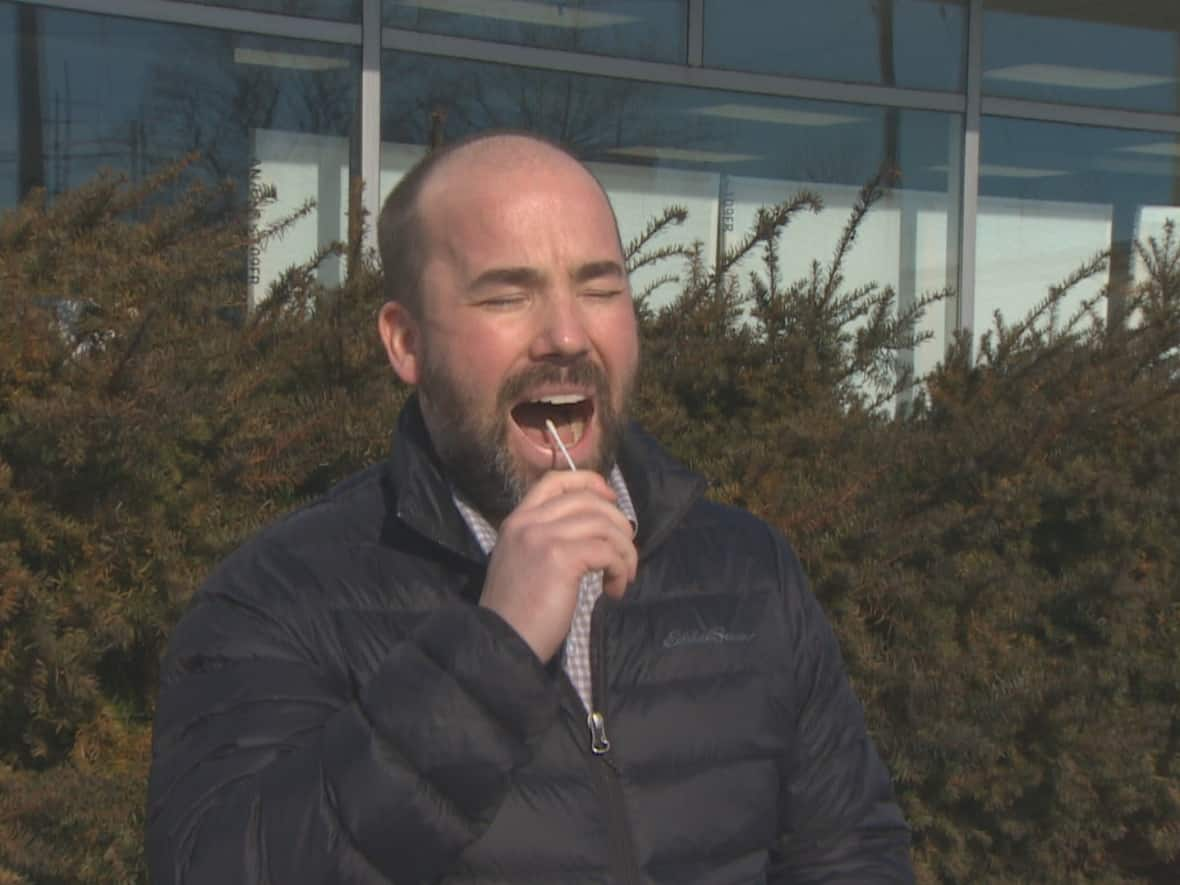Using rapid tests? N.S. Health now recommends swabbing both throat and nose

Researchers with Nova Scotia Health's microbiology team have found that collecting samples from both the throat and the nose makes for a more accurate rapid test result than just by nose swab alone.
The research project was designed after a public discussion theorizing that a combined sample might produce more accurate results.
"But because that's not currently recommended by the manufacturers, we wanted to actually investigate that possibility before we made those recommendations," said Dr. Todd Hatchette, chief of the microbiology division in the department of pathology and laboratory medicine for Nova Scotia Health.
"Based on what we found — if you were worried about Omicron if you have symptoms — if you have an antigen test, swab your throat first and then swab both of your nostrils and use that as your sample."
How to swab throat correctly
To swab your throat, it's best to use the help of a mirror and stick the swab right to the back of the throat, past the tongue and tonsils, and rub it back and forth about five times.
"It may make you gag but that usually means you're in the right spot," said Hatchette.
All who took part in the study administered the test themselves, under supervision, at the Halifax Convention Centre.
In a news release, Public Health said it's working to update the current testing instructions because those from the manufacturer suggest just a nose swab.
Public Health also said if people decide to only test from one source it should be a nasal swab, which would give a more accurate result than just a throat swab alone.
How did they determine the best way to test?
The research compared rapid test results from the following: nasal swab, throat swab, and combined nasal and throat swab.
All the results were confirmed using PCR testing.
Compared to PCR testing, the nasal-only and throat-only swabs each detected 64.5 per cent of cases.
By combining both the nose and throat swab in one test, the swabs were able to detect 88.7 per cent of cases.
The Nova Scotia team was the first to report research results to support the combined nose and throat collection method for rapid tests.
"A lot of anecdotal evidence suggested that just doing your nose was missing cases," said Hatchette.
So every time a new variant comes out, we never know if it's changed slightly and where it likes to grow and ... studies like these are important to show that our tests continue to work and how we can improve them.
"No test is 100 per cent perfect, but this will help us recover more cases moving forward."
Hatchette said his team is now looking at whether combined throat and nose swabs should become a standard practice when performing PCR tests.
The research project has been submitted for publication.
Tam applauds study
Speaking at a news conference Friday, Dr. Theresa Tam, Canada's chief public health officer, described the project as a "great Canadian study."
Tam said Hatchette had presented his results to Canada's chief medical officers recently.
She said she had asked her laboratory experts to take the study into account and see if they can provide further guidance.
Omicron may be behaving differently than previous variants, Tam said, so the new approach to be swabbing might be useful.
"I think that looks like some very sensible advice because rapid tests, we've got to make the best use of them," Tam said.
"So if by some adjustments to the swabbing technique, we can get a high yield, that's always a great thing to do."
MORE TOP STORIES


